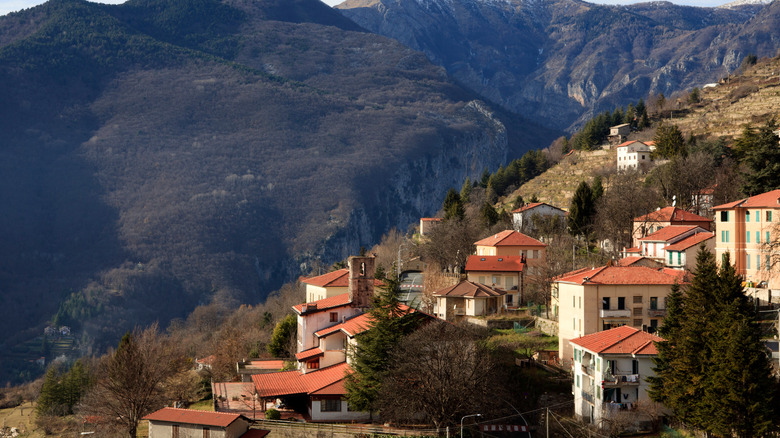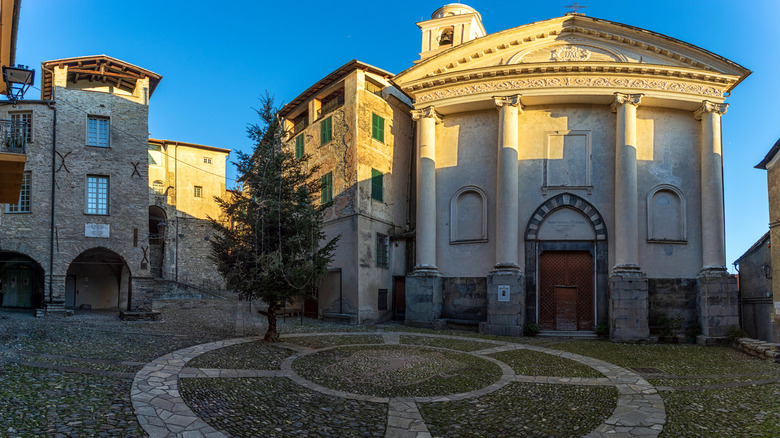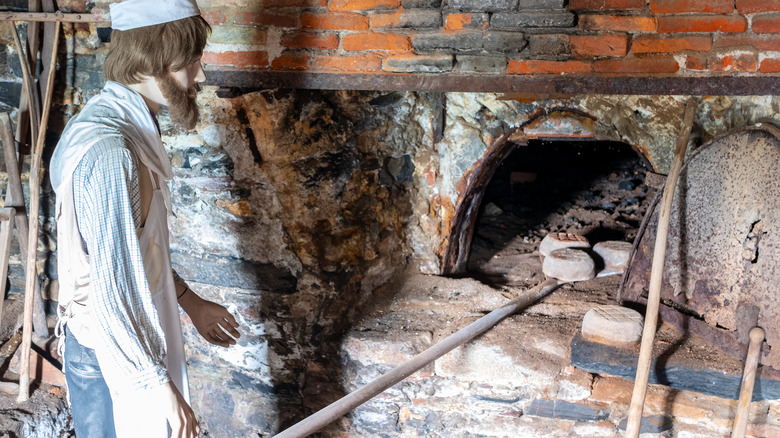The Spine-Chilling Destination In Italy Full Of Folklore Is Known As The 'Salem Of Europe'
The fall is the best time for haunted houses and eerie cemeteries all over the world. There are many spooky cities perfectly suited for a Halloween vacation, but if there's one country that has more than its fair share of haunted destinations, it's definitely Italy. With such a rich history spanning thousands of years, the country naturally has a ton of spooky tales and haunted history to discover. But it's not just Rome, Florence, or Venice that are known for their dark and mysterious pasts. You can also get your fill of (historical) frights when you stray off the beaten path. Triora, a tiny town in Liguria, is defined by its tragic history for being where the last witch trials were held in Italy.
The town is located in the Province of Imperia, less than an hour north of the luxe, beachy town of Sanremo and about two and a half hours west from the city of Genoa. Triora is a very small town of about 400 people. It's so small that you might not suspect the town's witchy past if it weren't for the number of witch-inspired souvenir shops and signs, let alone the whole museum dedicated to the trials.
The last witch trial in Italy happened here
Triora's witchy reputation has earned it the moniker of the "Salem of Europe," though there have been many witch trials in different European countries that pre-date the infamous events in Salem, Massachusetts, many of which have far greater death tolls. The witch trials on Triora began in 1587 when bad harvests, famine, and mass hysteria led many people in the town to point fingers at a group of women they believed to be the source of all their misfortunes. The women who were first accused tended to be poor and living on the outskirts of town, women who knew about natural medicine and herbology and were thus easy to scapegoat. The last trials ended in 1589, and an estimated total of around 30 women were accused. Some of them died in prison, and one woman died from torture, but few documents from that time have been preserved, so it is difficult to say what happened to every victim.
Much like America's witchcraft capital of Salem, Triora has reclaimed its witchy past in the form of offering tours and attractions to curious visitors. The Museo di Triora, which has dedicated exhibits about witchcraft and local ethnography, offers the most comprehensive tours and artifacts from the trials. You can also find witchy attractions while walking around town along color-coded routes: red for art, blue for curiosities, and yellow for family-friendly places. Sites like La Cabotina, the House of Witches, which was rumored to be the site for their dark rituals (and alleged cannibalism), are still accessible to visitors. The town also hosts a Halloween festival every year, as well as a witchcraft festival in the summer.
Beyond witchcraft, visit Triora for its food
While the ties to witchcraft are undoubtedly the biggest tourist draw in the city, Triora is also just a quaint medieval village that can make a great day trip for other reasons. It's not as fancy as other tourist-friendly places in Italy, but its ancient architecture and mountainous setting make it one of the most beautiful villages in Liguria. Aside from the witch-themed festivals throughout the year, the area is also known for its mushroom festival in September and a chestnut festival in October. Though there aren't many restaurants in town, Tripadvisor users love the fresh pasta and wine at Osteria La Loggia Della Strega; the ravioli, pork, and assorted desserts at L'erba Gatta; and Ristorante Tuttuben in neighboring Creppo, where the views are unbeatable but reservations are a must. In Triora, you can naturally shop for local produce like olive oil, cheese, and of course, mushrooms.
One of the main products that Triora is known for besides witches is bread. Before the trials, the village's main claim to fame was for its breads and grain, which made the area very prosperous in medieval times. Strangely enough, though the recipe for the bread appears to be a fairly straightforward mix of wheat flour, yeast, water, and salt, the round loaves of bread are so distinct (and delicious) that no one has been able to reproduce it outside of the town. If carbs are what you're craving, you can even visit the town's Vicolo Forno (Oven Alley), where you can see their old, public bread-baking ovens that date back hundreds of years. Today, you cannot use the ovens, but you can buy some loaves at the local bakery.


